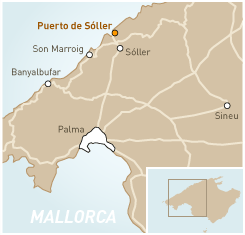EU fisheries regulations in the Mediterranean
The EU fisheries, annually producing about 6,9 tons of caught fish, are the third biggest fishing industry worldwide
and offer about 400.000 jobs. Therefore, the fish of the Mediterranean sea has a high economic value, as a great
part of the caught fish is intended for human consumption. The most popular kinds are the sardine, the anchovy,
the Mediterranean mussel, the hake and the tuna.
Though the fishing techniques have been improved, the Mediterranean Sea is still confronted with a decline of its fish population. As a result, the common fisheries policy explicitly intends to support a sustainable cultivation of the coasts and to preserve the future of the ecological system of the sea. To this effect, the European Fisheries Fund allocates 3,85 billion euro of subsidies from 2007 up to 2013. The member states choose how they distribute the capital in different sectors such as marine and freshwater fishery, aquaculture, fishermen organisations, processing and marketing as well as how they funds are deployed with regard to the different economic regions. Basic means of fisheries policy are regulations concerning the licensing, the reduction of fishing days or fleet as well as the employment of ship monitoring systems. The Community Fisheries Control Agency seated in Vigo (Spain) coordinates the strict observance of the fishing quota and the guarantee of the long-term preservation of the fish population.
http://www.agrar-fischerei-zahlungen.de/
http://www.gfcm.org/gfcm
http://europa.eu/pol/fish/index_de.htm
Though the fishing techniques have been improved, the Mediterranean Sea is still confronted with a decline of its fish population. As a result, the common fisheries policy explicitly intends to support a sustainable cultivation of the coasts and to preserve the future of the ecological system of the sea. To this effect, the European Fisheries Fund allocates 3,85 billion euro of subsidies from 2007 up to 2013. The member states choose how they distribute the capital in different sectors such as marine and freshwater fishery, aquaculture, fishermen organisations, processing and marketing as well as how they funds are deployed with regard to the different economic regions. Basic means of fisheries policy are regulations concerning the licensing, the reduction of fishing days or fleet as well as the employment of ship monitoring systems. The Community Fisheries Control Agency seated in Vigo (Spain) coordinates the strict observance of the fishing quota and the guarantee of the long-term preservation of the fish population.
http://www.agrar-fischerei-zahlungen.de/
http://www.gfcm.org/gfcm
http://europa.eu/pol/fish/index_de.htm
Puerto de Sóller
A fishing village at the Mediterranean Sea The life of a fisherman EU fisheries regulations in the Mediterranean Fishing tourism on Majorca
